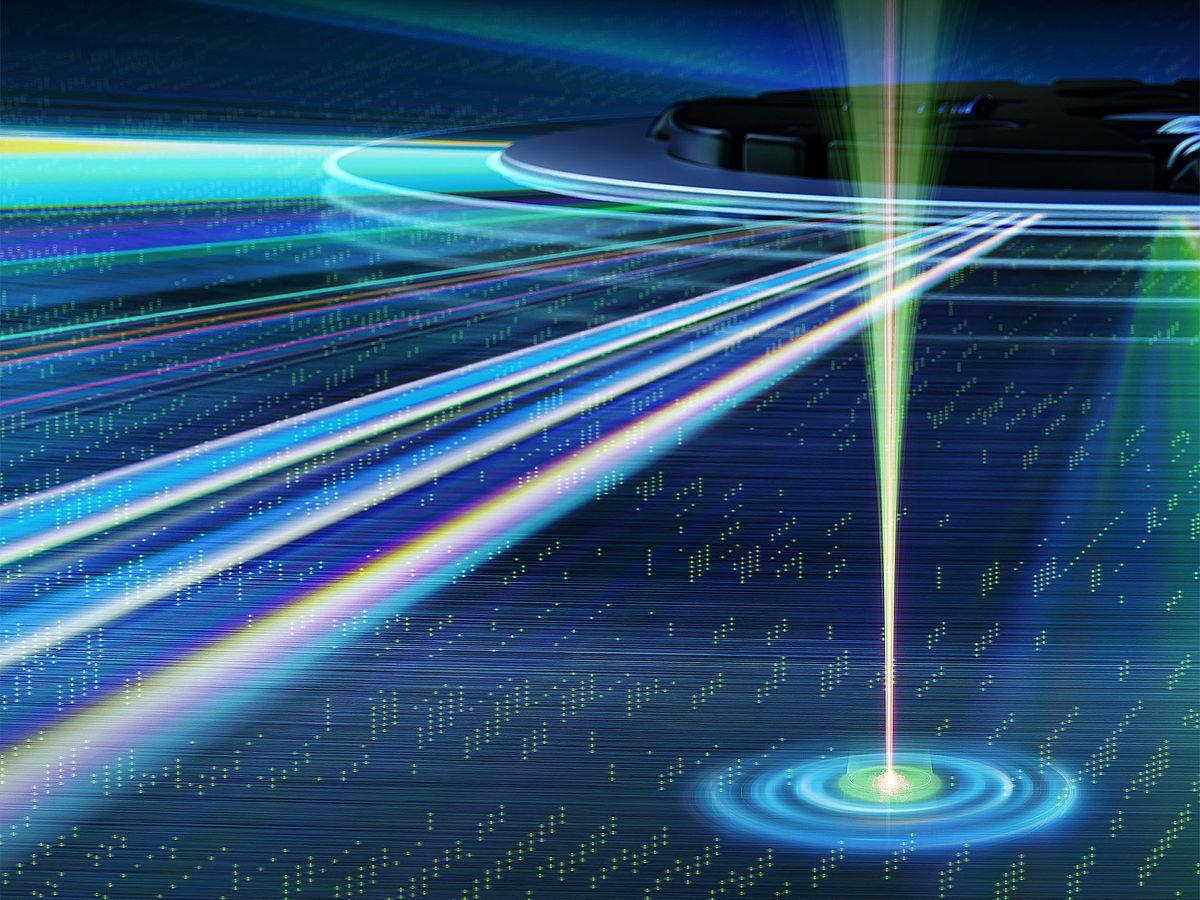A novel disc the size of a DVD can hold more than 1 million gigabits—roughly as much as is transmitted per second over the entire world’s Internet—by storing data in three dimensions as opposed to two, a new study finds.
Optical discs such as CDs and DVDs encode data using a series of microscopic pits. These pits, and the islands between them, together represent the 0s and 1s of binary code that computers use to symbolize information. CD, DVD, and Blu-ray players use lasers to read the data encoded in these discs.
“The use of ultrahigh-density optical data storage technology in big data centers is now possible.” —Min Gu, University of Shanghai for Science and Technology
Although optical discs are low in cost and highly durable, they are limited by the amount of data they can hold, which is usually stored in a single layer. Previously, scientists investigated encoding data on optical discs in many layers in three dimensions to boost their capacity. However, a key barrier that prior research faced was how the optics used to read and write this data were limited to roughly the size of the wavelengths of light they used.
Now scientists in China have developed a way to encode data on 100 layers in optical discs. In addition, the data is recorded using spots as small as 54 nanometers wide, roughly a tenth of the size of the wavelengths of visible light used to read and write the data.
All in all, a DVD-size version of the new disc has a capacity of up to 1.6 petabits—that is, 1.6 million gigabits. This is some 4,000 times as much data density as a Blu-ray disc and 24 times as much as the currently most advanced hard disks. The researchers suggest their new optical disc can enable a data center capable of exabit storage—a billion gigabits—to fit inside a room instead of a stadium-size space.
“The use of ultrahigh-density optical data storage technology in big data centers is now possible,” says Min Gu, professor of optical-electrical and computer engineering at the University of Shanghai for Science and Technology.
How to store a petabit on one disc
The strategy the researchers used to write the data relies on a pair of lasers. The first, a green 515-nanometer laser, triggers spot formation, whereas the second, a red 639-nm laser, switches off the writing process. By controlling the time between firing of the lasers, the scientists could produce spots smaller than the wavelengths of light used to create them.
The procedure used to create blank discs is compatible with conventional DVD mass production and can be completed within 6 minutes.
To read the data, the researchers again depended on a pair of lasers. The first, a blue 480-nm beam, can make spots fluoresce, while the second, an orange 592-nm light, switches off the fluorescence process. Precise control over the firing of these lasers can single out which specific nanometer-scale spot ends up fluorescing.
This new strategy depends on a novel light-sensitive material called AIE-DDPR that is capable of all these varied responses to different wavelengths of light. “It has been a 10-year effort searching for this kind of material,” Gu says. “The difficulty has been how the writing and reading processes affect each other in a given material—in particular, in a three-dimensional geometry.”
The scientists encoded data on layers each separated by 1 micrometer. They found that the writing quality stayed comparable across all the layers. “Personally, I was surprised that nanoscale writing-recoding and reading processes both work well in our newly invented material,” Gu says.
The researchers note that the entire procedure used to create blank discs made using AIE-DDPR films is compatible with conventional DVD mass production and can be completed within 6 minutes. Gu says these new discs may therefore prove to be manufacturable at commercial scales.
Currently, he says, the new discs have a writing speed of about 100 milliseconds and an energy consumption of microjoules to millijoules.
Still, Gu says, the researchers would like to see their new discs used in big data centers. As a result, they’re working to improve their new method’s writing speed and energy consumption. He suggests this may be possible using new, more energy-efficient recording materials. He says more layers in each disc may be possible in the future, using better lenses and fewer aberrations in their optics.
The scientists detailed their findings online 21 February in the journal Nature.
- Should Data Centers Be Kept Cool—Or Warm? - IEEE Spectrum ›
- Want an Energy-Efficient Data Center? Build It Underwater - IEEE ... ›
Charles Q. Choi is a science reporter who contributes regularly to IEEE Spectrum. He has written for Scientific American, The New York Times, Wired, and Science, among others.



